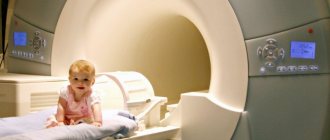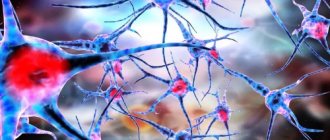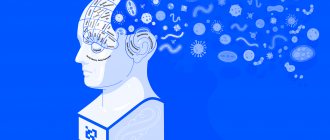Otitis is a disease accompanied by severe (both shooting, pulsating or aching) pain in the ears. Pain from otitis media can radiate to the teeth, temple, the corresponding side of the head and the back of the head. The patient experiences weakness, insomnia, and loss of appetite.
Depending on the nature of the disease, otitis media can occur in acute and chronic forms.
Acute otitis media is severe and characterized by severe pain.
1
Audiometry in MedicCity
2 Flushing the ear canals
3 Diagnosis of otitis in MedicCity
Acute otitis is a signal for the patient that it is necessary to urgently consult a doctor! Acute ear pain cannot be tolerated; it can cause deafness! Chronic otitis of the ear is less pronounced, but also very dangerous! Otitis media does not go away on its own; after otitis media, the patient may lose hearing forever, so at the first signs of the disease, you should urgently contact a specialist.
Causes of pain
Painful sensations in the ear area and the right side of the head can occur due to inflammatory processes, as well as when the blood circulation in this area is impaired. The process can spread from the organ of hearing to part of the head and vice versa. When the first complaints appear, it is necessary to undergo an examination and determine their cause.
Otitis
Ear inflammation (otitis) can occur in adults and children. It occurs as a complication of viral diseases (ARVI, influenza), injuries, hypothermia or inflammation of the sinuses. At the first stage, the patient is bothered by constant pain in the ear, which spreads to the entire surface of the head. However, otitis media can progress and develop in several stages:
- aseptic inflammation, which causes aching pain;
- addition of a bacterial infection;
- development of purulent inflammation - accompanied by acute pain and hearing impairment;
- probable complications in the form of purulent melting of the eardrum, as well as the spread of infection to the inner ear and lining of the brain.
Otitis media is often chronic and appears annually. After an examination, an otolaryngologist will help you choose the most effective treatment regimen. It is important to pay attention to the first symptoms in time, since the chronic course of the inflammatory process can provoke partial or complete hearing loss.
Diseases of the external ear
The outer ear is the peripheral part of the hearing organ, which is separated from the middle part by the eardrum. Pathological processes in this area often manifest as acute pain in the right ear and head. With timely treatment, they resolve without complications, but in the absence of intervention they can spread to the middle and inner ear.
- Furunculosis, eczema, fungal skin infections - these processes are accompanied by inflammation and pain. The skin of the auricle turns red and peels, and ulcers (boils) may form on it. Treatment consists of external use of anti-inflammatory and antifungal drugs.
- Diseases that lead to the formation of cerumen plug - it forms deep in the ear canal, so it is impossible to remove it yourself. The cause may be anatomical features of the structure of the hearing organ or excessive formation of sulfur.
- Injuries, falls and bruises are another cause of inflammation of the outer ear. In young children, the process can be triggered by foreign objects entering the ear canal.
When diagnosing, it is important to assess the condition of the eardrum. Inflammatory processes can spread to it and even cause its perforation. Injuries that cause damage are also dangerous.
Inner ear diseases
Inflammation of the inner ear is the cause of acute pain in the right side of the head and in the ear. The organ has a complex structure and is responsible not only for hearing, but also for balance. It is presented in the form of channels and labyrinths filled with liquids. This is where bacteria multiply, causing inflammation.
Diseases of the inner ear require immediate treatment; in most cases, antibiotic therapy is used for this. The tympanic cavity is a comfortable environment for the growth of bacteria, and they can cause purulent inflammation. This leads to hearing loss, constant headaches, and the development of complications, including acute meningitis - inflammation of the membranes of the brain.
Change in blood pressure
An increase or decrease in blood pressure is a common reason why the right ear and the right side of the head hurt. Hypertension (high blood pressure) occurs due to insufficient elasticity of blood vessels, nervous tension and other factors. It manifests itself with characteristic symptoms:
- pressing headache that spreads to the back of the head, temple, and may affect the ear;
- deterioration of hearing and vision, the appearance of tinnitus;
- redness of the skin and mucous membranes, the appearance of small capillary hemorrhages.
With a decrease in pressure (hypotension), an increase in heart rate, weakness, and impaired coordination of movements are observed. The skin and mucous membranes may become pale. Insufficient oxygen supply to the brain is dangerous, as it can provoke a stroke or transistor ischemic attacks.
Stroke
Acute cerebrovascular accident is a stroke. It occurs when there is a sudden stop in the flow of oxygen-rich blood to certain areas of the brain. There are ischemic (manifested by blockage, compression of a vessel, low blood pressure) and hemorrhagic (the result of damage to an artery and hemorrhage in the brain) stroke. The first type is more common and is manifested by the following symptoms:
- sudden headache, often one-sided, which may affect the ear;
- impaired coordination of movements;
- weakening of the facial muscles on the injured side;
- discomfort and pain behind the sternum;
- impaired diction, the appearance of memory lapses;
- loss of consciousness.
The main reason why strokes occur is the lack of early diagnosis. Doctors at the Clinical Brain Institute recommend undergoing regular scheduled examinations to identify cardiovascular diseases in the early stages. Monitoring blood pressure, proper nutrition and dosed exercise, as well as systematically taking medications as needed are the basis for preventing stroke at any age.
Pain in the ear and right side of the head due to neuralgia
If your head hurts and radiates to your right ear, this may be a sign of neuralgia. This is not a separate disease, but a type of pain that occurs when a nerve is inflamed or damaged. The trigeminal nerve is most often affected, which gives off branches to the muscles of the face, the organ of hearing, the upper and lower jaws.
Neuritis is an inflammatory process that develops in nerve fibers. It is accompanied by acute throbbing pain, which can be one-sided, affecting part of the head, ear and half of the face. It intensifies with sharp sounds, bright lighting and other irritants, as well as with chewing and turning the head. Treatment consists of taking painkillers and anti-inflammatory drugs. If they are ineffective, a nerve block is indicated - injections along its course with anesthetics and hormonal anti-inflammatory drugs.
Diseases of the cervical spine
The cervical spine contains arteries that carry blood from the heart to the brain, analyzer organs, muscles and facial skin. Their mechanical pinching leads to impaired sensitivity in certain areas and chronic headaches. Normally, the vessels are located in the canals formed by the processes of the vertebrae, and blood moves freely through them. However, there are a number of diseases that lead to poor circulation, pain in the head and ear:
- osteochondrosis is a pathology of intervertebral discs, in which they become fragile and cannot absorb movement, and the distance between adjacent vertebrae decreases;
- spondylosis - fusion of two or more adjacent vertebrae as a result of injury, inflammatory or dystrophic changes, destruction of cartilage;
- curvature of the spine, most often cervical scoliosis;
- chondrocalcinosis - deposition of salts in the periarticular tissues, which leads to decreased joint mobility;
- intervertebral protrusions and hernias - protrusion of intervertebral discs, their gradual erasure until the outer fibrous membrane ruptures;
- vertebral displacement.
Spinal diseases often manifest as headaches. It can be one-sided, since the load on the spinal column becomes uneven, and mechanical compression of the vessels and nerves occurs.
Inflammation of the lymph nodes
Lymphadenitis is inflammation of the lymph nodes. Pain in the right ear and right side of the head can be caused by damage to the parotid lymph nodes. It is acute, pulsating, and may be accompanied by fever. The disease occurs as a complication of a viral infection of the upper respiratory tract; a bacterial or fungal pathogen can also be diagnosed.
With lymphadenitis, redness of the skin behind the ears and the appearance of a hard lump may be observed. The local temperature is increased and pulsation is felt. Treatment consists of taking antibiotics, anti-inflammatory drugs, and painkillers.
How does a boil in the ear hurt?
Another cause of ear pain is the formation of a boil in the external auditory canal. It can appear when the skin is injured: for example, when cleaning wax from the ears carelessly. An infection penetrates into the scratch, inflammation begins and a purulent boil forms.
The pain is moderate at first, but becomes stronger as the boil grows. It often radiates to the jaw and neck, and worsens when chewing. In addition to pain, the patient may complain of itching and a feeling of fullness, as well as decreased hearing due to partial blockage of the ear canal.
Diagnostic methods
At the Clinical Brain Institute, a complete diagnosis is carried out, which examines all possible causes of pain in the right ear and right side of the head. The initial appointment is carried out by a therapist. Based on anamnesis (medical history), examination and questioning, the patient receives a referral to a specialist. To exclude diseases of the hearing organ or paranasal sinuses, consultation with an otolaryngologist is necessary, or if a neurological picture is present, a neurologist. If you have high blood pressure, it is recommended that you undergo regular scheduled examinations with a physician.
To obtain a complete picture of the disease, an individual diagnostic regimen is prescribed. It may include the following steps:
- general and biochemical blood tests - will show the concentration of leukocytes (an indicator of the inflammatory process), deficiency of important microelements, as well as glucose levels;
- additional tests - studies to determine the gas composition of arterial blood (to detect hypoxia) and hormones;
- MRI and CT are the most accurate and informative ways to assess the condition of the brain; they are prescribed for suspected neoplasms, various defects of nervous tissue, and pathological changes in blood vessels;
- electroencephalography - a method for assessing the bioelectrical activity of brain tissue;
- Ultrasound of the vessels of the neck and head (Dopplerography) - indicates areas of narrowing of the arteries, impaired blood flow and other pathologies;
- examination by an otolaryngologist to identify diseases of the hearing organ.
Based on the diagnostic results, an individual treatment regimen can be prescribed. It is important to go through all the stages and carry out the necessary tests. At the Clinical Brain Institute, examinations are carried out using modern equipment, which allows you to obtain the most accurate results.
Removing wax plug
Do not try to remove earwax yourself using a cotton swab. This way you will only push it deep into the ear canal, and it will begin to put pressure on the eardrum. Removal of wax plug is a procedure that can be performed in the otolaryngology department of the medical center. It looks like this:
- the patient is asked to tilt his head at a certain angle;
- the doctor inserts a Janet syringe (without a needle) into the ear;
- A heated solution is supplied under pressure, which washes the plug out of the ear.
The procedure is painless and effective.
What to do if your ear and right side of your head hurt
Treatment is selected individually, depending on the nature and intensity of the pain syndrome, the exact diagnosis, the patient’s age and other factors. The scheme may include several stages that are combined with each other.
- Drug treatment: in the first stages, non-steroidal anti-inflammatory drugs (Ibuprofen, Meloxicam and others) are prescribed. They affect inflammatory processes of any origin, not complicated by bacterial infection. To relieve episodic pain, analgesics are used - painkillers (Analgin).
- Antibacterial therapy: antibiotics are indicated for purulent inflammation, as well as to prevent its development. These drugs are often prescribed for otitis media.
- Muscle relaxants are used in addition to the main treatment regimen (Mydocalm). These drugs help relax muscles and relieve vascular spasms.
- Nootropics are a group of drugs to improve blood supply to the brain (Glycine, Phenibut). The decision about their effectiveness for various disorders is made by the attending physician.
- Surgical treatment - surgery is prescribed only if conservative methods do not bring results. It may be necessary for purulent otitis, some pathologies of the cervical spine, and the consequences of injuries.
The Clinical Brain Institute specializes in the diagnosis and treatment of headaches. The center is equipped with the necessary technical facilities for a full examination of patients. Treatment is carried out both on an outpatient basis and in a hospital, with constant supervision by competent specialists. Doctors recommend not to endure pain in the ear and head, especially if it is intense or occurs frequently - timely diagnosis and initiation of treatment will prevent dangerous consequences.
Clinical Brain Institute Rating: 4/5 — 10 votes
Share article on social networks
Acute otitis media of the middle ear: what causes inflammation?
The inflammatory process is always caused by pathogenic microorganisms, which means that the prerequisites for their activation must be present in the body. The causes of otitis media are:
- hypothermia;
- diseases caused by infection (flu, ARVI, measles);
- inflammatory processes of the ENT organs (the tympanic cavity is connected to the nasopharynx via the Eustachian tube, it is not surprising that the infection from the nasopharynx easily penetrates into the middle ear);
- improper nose blowing;
- hypertrophy of adenoid vegetations;
- rhinitis, sinusitis;
- allergic reactions;
- deviated nasal septum;
- foreign object in the ear;
- damage to the hearing organ.
Symptoms
The acute course of the disease is characterized by a rapid onset and pronounced symptoms.
With a disease of the outer ear, a person experiences pain inside, which intensifies when pressing on it from the outside. Acute pain occurs when swallowing and chewing food. The ear itself swells and turns red. The skin of the auricle is itchy, the patient's complaints are reduced to a state of stuffiness and ringing in the ear.
In acute otitis media, the main sign of inflammation is the sudden appearance of sharp shooting pains, which become stronger by night. The pain can radiate to the temples, left or right frontal parts, to the jaw - it is very difficult to endure even for an adult, not to mention children. The following symptoms are also characteristic of acute otitis media:
Friends! Timely and correct treatment will ensure you a speedy recovery!
- fever (up to 39°C);
- tinnitus;
- hearing loss;
- lethargy, malaise, loss of appetite;
- in the exudative form, discharge comes from the ear (usually this discharge is transparent or white);
- Acute purulent otitis media is characterized by suppuration from the ear.
The main symptom of labyrinthitis is dizziness. They can last a few seconds, or they can last for several days.
If you notice one or more of the symptoms described above, you should immediately consult a doctor for treatment.
What not to do during treatment
Some patients are overly self-confident and believe that a disease such as otitis media can be easily cured with the help of folk remedies and “grandmother’s” recipes. A wide variety of methods are used. This is a huge misconception!
The first mistake is that no foreign objects should be placed in the ear canal. Some are trying to use phytocandles, others, for example, geranium leaves. Such measures are fraught with the fact that leftover leaves may get stuck in the ear, which will provoke increased inflammation.
The second mistake is the use of heat and warming compresses for the purulent form of the disease. Some people replace compresses with a heating pad. At this stage of the disease, thermal heating will only increase the proliferation of bacteria.
The third mistake is trying to instill various oils or variations of alcohol into the ears. If during such treatment a perforation of the eardrum occurs, such instillations will not only cause pain, but will also cause scarring in the middle ear and eardrum.
Complications and preventive measures
As a rule, if you start treating the disease on time, treatment of acute purulent otitis, exudative or inflammation of any other kind, you can avoid any complications.
However, if treatment is not carried out and the disease progresses, the diagnosis can become chronic. The most serious consequences are: meningitis, encephalitis, brain abscess, facial neuritis, hearing loss. But these dangerous conditions can only appear when patients persistently neglect treatment for otitis media.
Preventive measures include the fight against existing foci of inflammation in the body, competent and timely treatment of ENT diseases, proper ear hygiene and, of course, strengthening the immune system.








